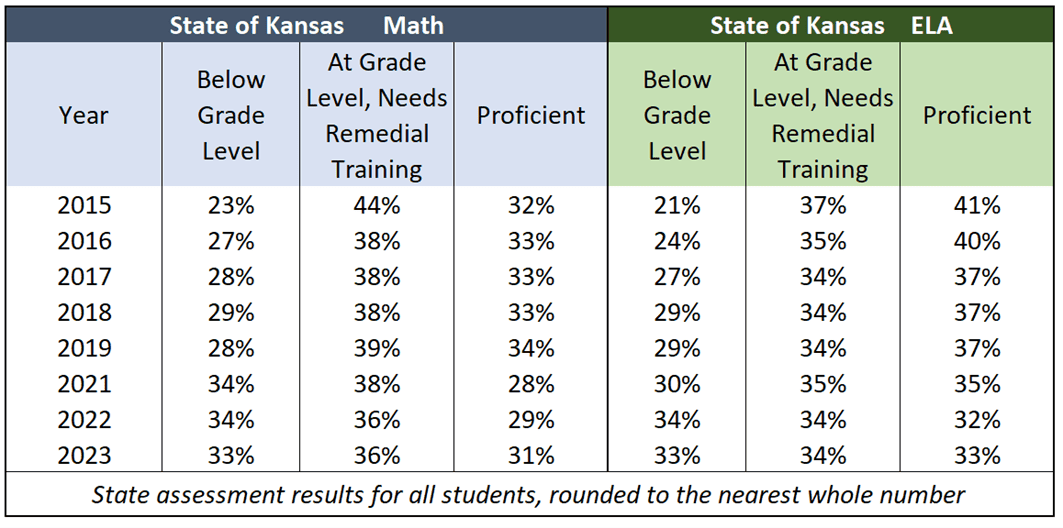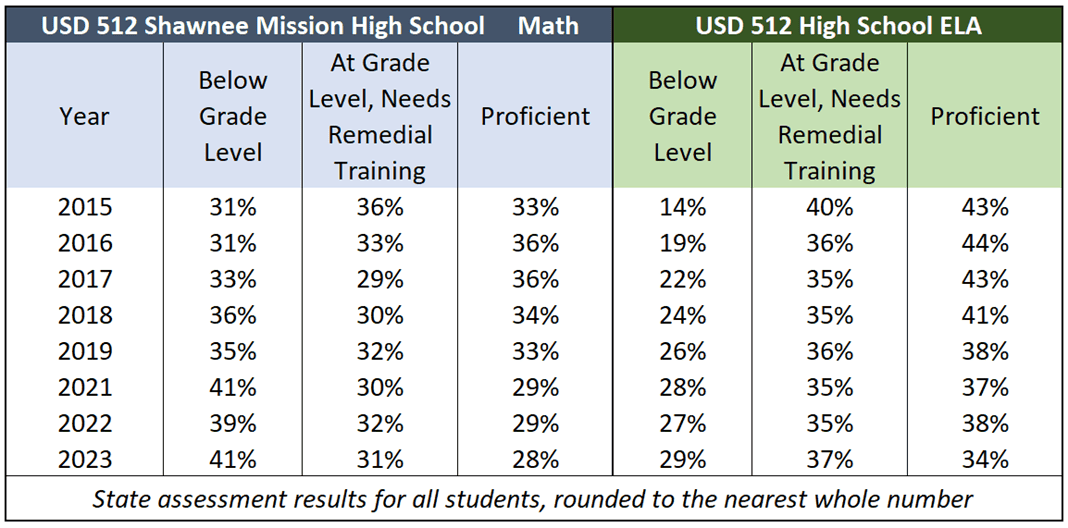Videos, teacher training materials, and even school teacher testimony shows the tenets of critical race theory (CRT) are embedded in school districts in many parts of Kansas. Yet the Kansas City Star insists – without evidence, of course – that it doesn’t exist. Most recently, it did so to discredit self-described conservative candidates who say they are opposed to CRT tenets.
But Star reporter Sarah Ritter didn’t question claims made by the incumbents, who she says are ‘moderates.’
Jan Kessinger, running for the Blue Valley school board, said the district is on the right path, with strong student achievement and quality teachers, and he has been critical of “fringe elements trying to take over local school boards.”
The ‘right path’ is subjective, but journalists pursuing truth would at least cite student achievement results so readers can decide for themselves.
State assessment results show outcomes for math and English Language Arts in Blue Valley are considerably lower than in 2015 for all students, and high school results are even lower. In math, for example, 21% are below grade level, and just 47% are proficient.

Ritter criticized challenger Trisha Hamilton for saying special education if fully funded, which is true if the funding from all sources are counted. However, a flaw in the formula excludes at least $150 million of funding, so funding technically is short based on the statute.
Hamilton’s opponent, incumbent Patrick Hurley, is quoted as saying, “needs are not being met.…at the end of the day, we are not receiving the appropriate level of funding for special education.” Ritter could have asked Hurley why the district isn’t using its more than $50 million in operating cash reserves for the alleged unmet needs, but the Star’s preferred candidates aren’t to be challenged.
Shawnee Mission Post covers up low achievement
The Shawnee Mission Post hosted a forum for USD 512 Shawnee Mission candidates, moderated by SMP Editor Kyle Palmer.
Palmer stated that the Department of Education had announced math scores on the state assessment were the “highest overall since 2017.” State officials may have said that, but the data tells a much different story.
In 2017, 28% of students were below grade level in math and 33% were proficient. Now, 33% are below grade level and 31% are proficient.

Palmer also said that Shawnee Mission “routinely outscores state averages” and that “defenders of public education say that public schools are on the right track after the disruptions caused by COVID-19.” Palmer also said that critics say that roughly one-third of Kansas students remain in the lowest quadrant of reading and math, compared to about one-quarter of Shawnee Mission students.
Credit Palmer for at least giving some perspective on students scoring below grade level (education officials prefer to call it ‘the lowest quadrant’ because that obscures the ugly truth). Excusing low outcomes because Shawnee Mission students are not as bad off as other students is a disservice to parents, however. Its also borderline insulting to the families who cannot afford to live within the boundaries of USD 512. According to data from the U.S. Census Bureau the poverty ratio in the Kansas City, Kansas district for kids aged 5-17 is 23.2% while in Shawnee Mission it is only 5.5%. The fact of achievement gaps – be they racial or income-based – are commonly understood and tragic. SMSD is essentially asking for applause for having more wealthy kids.
High school students are leaving Shawnee Mission much less prepared for college and career. In 2015, 31% of 10th-graders were below grade level in math, and a third were proficient; now, 41% are below grade level, and only 28% are proficient. Outcomes in English Language Arts also dropped precipitously.

Each candidate at the forum was asked whether they were pleased with achievement levels. The incumbents and a few of the other candidates spoke highly of the district’s work but gave no achievement data to support their positions. Asked what they thought needed to be done to improve outcomes, two candidates talked about the need for more diversity and equity, but no data shows DEI initiatives improve outcomes.
Two challengers – Ronald Occhiogrosso and Lynn McLarty – were more direct. They cited achievement levels declining and called for a better allocation of resources.
Shawnee Mission may once have been a high-performing district, but it hasn’t been for quite some time. Some students certainly do well, but many students are being left behind, and pretending the problem doesn’t exist won’t change anything.
Student achievement cannot improve until adult adult behaviors change, and that includes media.

